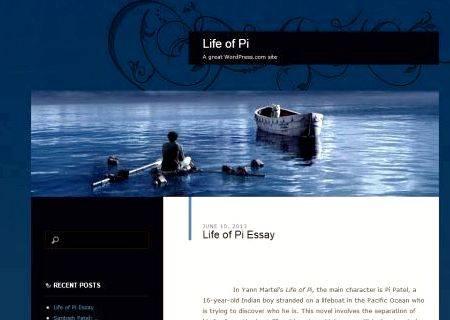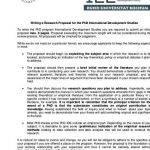Critical Evaluation
The central theme of Yann Martel’s Life of Pi concerns religion and human faith in God. However, the novel pointedly refrains from advocating any single religious faith over another. Instead, the novel investigates the nature of religious faith itself. This theme is embodied most clearly in the novel’s protagonist, Pi Patel, who is a devout follower of three very different religions. Pi has studied and memorized the stories of all the various incarnations of the Hindu gods, maintaining shrines in his home to many of them. He also possesses a crucifix and a rosary, going to church on Sundays and praying to Jesus. Lastly, he owns and proudly uses a prayer rug, observing the call to prayer several times a day as a devoted Muslim. By comfortably following three of the world’s major religions, Pi represents not just the possibility of peaceful coexistence between different faiths but also the belief that different religions are merely alternative paths to the same destination.
The specific doctrines of Pi’s three faiths make very little difference to him. When comparing these religions to one another, Pi seems to conclude in his innocence that there need not be conflict between them. For him, each religion simply emphasizes what is most powerful and true in the others according to its own strengths. The religions resemble different chapters of one very long book, each chapter setting up and feeding into the next. The novel contrasts Pi’s easy acceptance of his three faiths with the competition and arguments between the leaders of those faiths. In Munnar, while Pi is walking in a busy marketplace with his parents, they happen upon the pandit, imam, and priest who are the leaders of Pi’s Hindu, Muslim, and Christian faiths, respectively.
When the leaders discover that Pi has been following three different religions, each attempts to claim Pi for himself. They reason that one boy cannot follow three different paths, and they begin to debate which religion would be best for Pi. When the leaders demand that Pi choose one faith to the exclusion of all others, he blurts out, “I just want to love God,” embarrassing the hot-headed religious leaders and putting a stop to their debate.
This tension between reason, logic, and argument, on one hand, and simple religious faith and the desire to love God, on the other hand, lies at the novel’s core. The human capacity for reason is contrasted to religious faith repeatedly, nowhere more poignantly than in the chapters showing Pi adrift on the Pacific Ocean, where his faith, not his reason, enables Pi to survive: I was alone and orphaned in the middle of the Pacific hanging onto an oar, an adult tiger in front of me, sharks beneath me, a storm raging about me. Had I considered my prospects in the light of reason, I surely would have given up and let go of the oar, hoping that I might drown before being eaten.
Pi’s refusal to consider his predicament “in the light of reason” opens up space for his faith in God to flourish, and this faith sustains him even through the darkest, most fearful moments. Fear, Pi realizes, is “life’s only true opponent,” and he holds back the fear with his faith, no matter what religion embodies that faith.

The novel also explores another meaning of faith—the human capacity to believe what is unbelievable. Pi’s story challenges readers with plot twists that sound impossible. That Pi survives 227 days adrift on a lifeboat in the Pacific Ocean is remarkable enough; that he survives this time in the company of a Bengal tiger or that he happens to run into a floating island of carnivorous algae strains readers’ ability to suspend their disbelief. A skeptical attitude toward the narrative is embodied by Mr. Okamoto and Mr. Chiba, who at first refuse to believe Pi’s stories about a Bengal tiger and carnivorous algae. They insist that his story contradicts reality, to which Pi replies, “You want a story that won’t surprise you. That will confirm what you already know. That won’t make you see higher or further or differently. You want a flat story.”
When Pi gives them the flat story they want, a story that fails to contradict what they are prepared to believe, the men become excited by the prospect that this second version is the truth. However, Pi is not finished with them or their skepticism. He demonstrates that the facts of both stories are irrelevant to the men’s purpose of finding out what caused the Tsimtsum to sink, and he points out that the men are in a position to verify neither of the two versions. Then, he asks, “Which is the better story, the story with animals or the story without animals?” The men agree that the story with animals is superior, which prompts Pi to add, “And so it goes with God.” This is faith, Pi seems to say. Since it is the nature of religious faith that it can never be proven, just as the facts of Pi’s journey across the Pacific can never be verified, the question is not a matter of reason but of belief. Pi seems to argue that what should compel one to believe a story is whether the story is a good one—whether it helps readers “see higher or further or differently.”
Start your free trial with eNotes to access more than 30,000 study guides. Get help with any book.






 Phd thesis sample proposal outline
Phd thesis sample proposal outline Listahan ng sanggunian sa thesis proposal
Listahan ng sanggunian sa thesis proposal Nanostructured lipid carriers thesis proposal
Nanostructured lipid carriers thesis proposal The myth of the latin woman thesis proposal
The myth of the latin woman thesis proposal La france en 1936 dissertation proposal
La france en 1936 dissertation proposal






